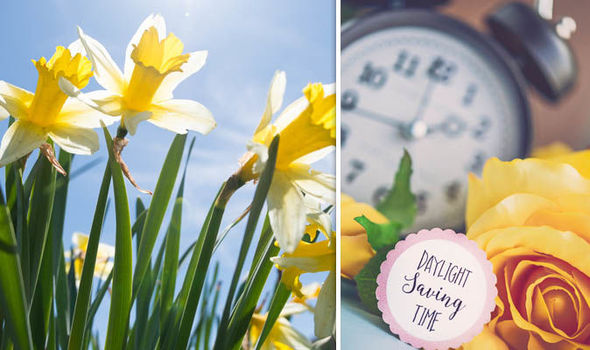When is first day of spring?
This year, the main day of spring happen on Tuesday, March 20 - in the UK it will be stamped formally at 4.15pm GMT.
The March equinox is the date utilized by space experts to stamp the beginning of spring in the northern side of the equator, flagging the start of longer days ahead and, ideally, hotter climate to come.
The genuine date of the principal day of spring changes each year as it depends on the galactic timetable.
This year, the meteorological spring season began on March 1 and completes on May 31.
Climate forecasters, for example, the Met Office, utilize the meteorological strategy in view of the Gregorian schedule to enable them to better watch changing occasional examples.
The seasons are characterized as spring (March, April, May), summer (June, July, August), fall (September, October, November) and winter (December, January, February).
The year's spring equinox, additionally called the March or vernal equinox, falls at absolutely 12:25 pm EDT today.
When do the clocks go forward?
In the UK, the timekeepers go ahead on the last Sunday in March.
This implies in 2018, you should put them forward a hour at 1am on Sunday, March 25 - this end of the week.
The timekeepers change twice every year - they go ahead a hour on the last Sunday in March and are returned a hour on the last Sunday in October.
A decent method for recollecting which way the tickers change is the colloquialism: "Spring forward, fall back."
The idea of sunlight reserve funds was first presented by the Germans amid World War One to eliminate the utilization of simulated lighting and the consuming of significant coal.
The primary day of British Summer Time was May 21, 1916.
Mists and hail, rain and even snow may keep Washington from seeing the sun Tuesday at one of the vital snapshots of the cosmic year.
At 12:15, p.m. eastern light time, the sun will be. (or on the other hand more legitimately, SEEM to be) balanced in a place of equity of light between the northern and southern sides of the equator.
As it improves the situation just two pivotal moments every year, it will seem, by all accounts, to be specifically over the equator, favoring with its nurturing warmth neither the regions of our planet over the equator or those beneath.
In any case, as per the most recent conjectures, relatively every sort of snowy precipitation in the arms stockpile of chilly climate may keep us from looking at the sun oriented sphere , as a demonstration of festivity existing apart from everything else, and potentially stunningness at the normality of Earth's orbital movement..
Which might be similarly also, obviously, unless we have clutched our shroud glasses from the previous summer. Looking with the unprotected eye upon the sun oriented plate is a solution for acquiring harm to the eye.
Be that as it may, this ought not keep an acknowledgment existing apart from everything else. A short time later, the sun will appear to cross the equator, and support us in the northern half of the globe for a half year. At that point it will cross again in September, at the time equinox of the year.
So it might snow. Hail may fall. What's more, cool rain. Be that as it may, that sun, as indicated by every one of the laws of material science and cosmology, can not be halted. On the off chance that anything can be said with conviction, it is that it will proceed on its yearly journey until the point when it stands (or appears to remain) over the tropic of disease.
That will be the snapshot of the late spring solstice. It will come in June. Be that as it may, let us not stretch out beyond the amusement. Tuesday is the equinox, the vernal equinox. Regardless of whether we see the sun or not, whether we wear boots and hooded coats or not. The time will be 12:15 p.m.

